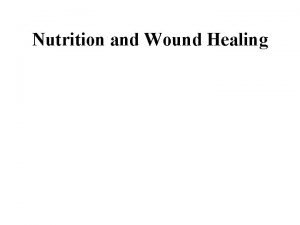Multiscale Models of Wound Healing The model Proper

- Slides: 1

Multiscale Models of Wound Healing The model Proper healing of cutaneous wounds requires collective and coordinated cellular behavior that spans multiple length and time scales. The rate of wound repair is limited by the slow recruitment of fibroblasts, whose migration is elicited by gradients of platelet -derived growth factor (PDGF). We have been developing models of fibroblast chemotaxis with consideration of molecular, supramolecular, cellular, and tissue-level dynamics, which span disparate time (seconds to weeks) and spatial (nm to cm) scales. What is new inside? We combine a host of modalities (reaction-diffusion, continuum mechanics, data-driven correlation, statistical physics, hybrid modeling) to model aspects of wound healing at different scales. The output(s) of each scale’s model naturally informs or serves as the input(s) of the next scale. How will this change current practice? A handful of biologicals are currently approved for treatment of wounds; however, the current treatments have limited efficacy. Knowledge of molecular, cellular, and tissue-level processes need to be connected to inform and predict outcomes of improved therapeutic strategies. End Users: We envision that our models will be used by other researchers who wish to build upon them and by modeling groups in the pharma industry (several companies now have systems pharmacology groups). Basic expertise in computational modeling will be required. Jason Haugh (PI), North Carolina State University James Bear, UNC-Chapel Hill Timothy Elston, UNC-Chapel Hill NIBIB, EB 018816

